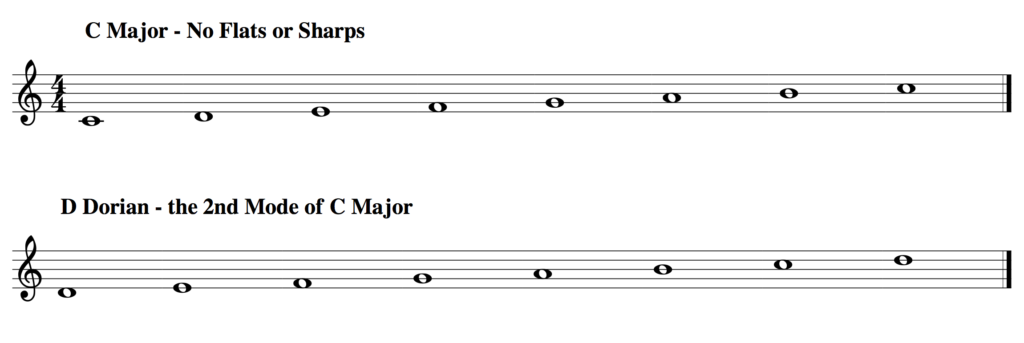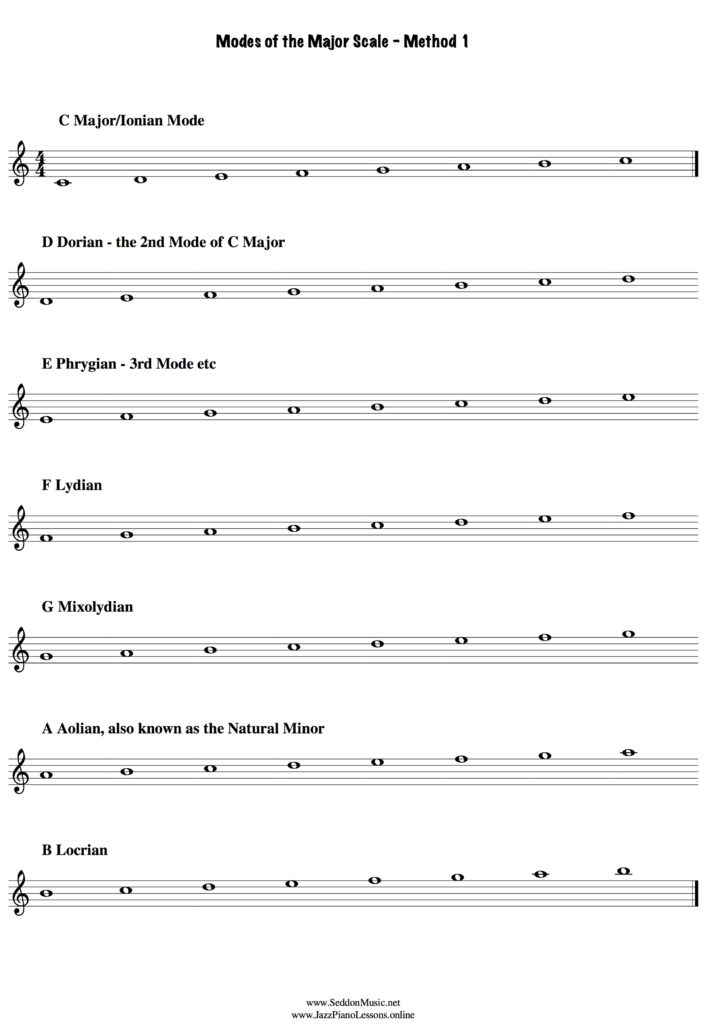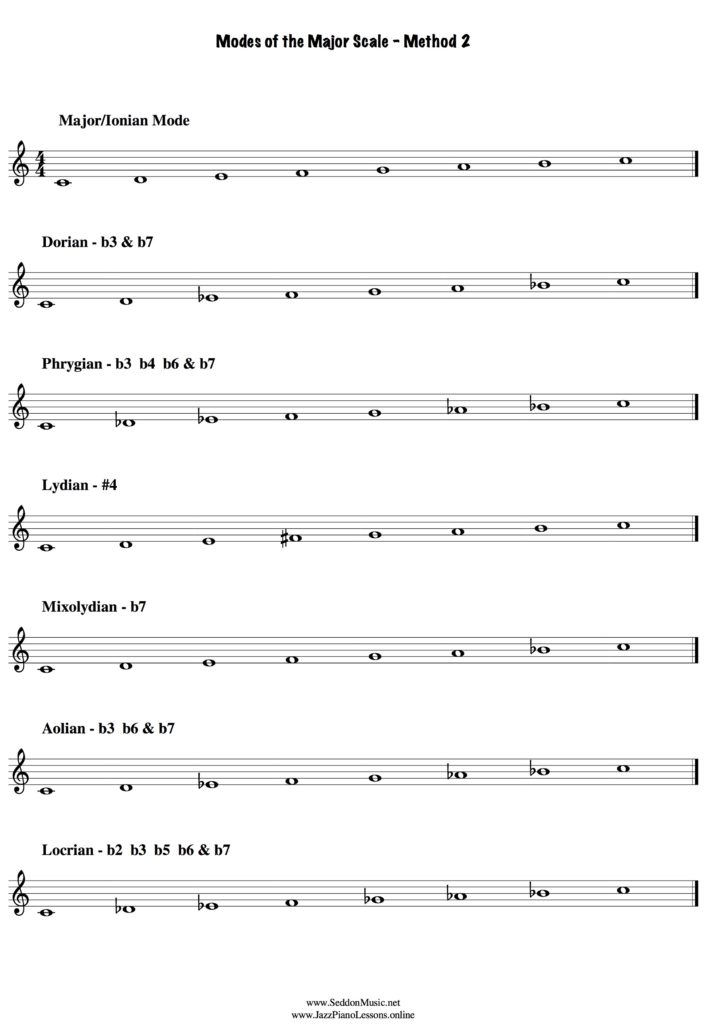A great way to get started in improvising is to understand how to use modes to solo.
Modes can be a little tricky to understand at first, but I will take you through step by step on the videos.
First, it’s a great idea, if you haven’t already to get an understanding and know your major scales really well. Click here for more on that. Having said that, you don’t need to perfectly know all 12 major scales to get started learning a few of the modes.
There are two ways I think of modes and depending on the key that I’m relating the mode to (in my mind), or which particular mode I’m thinking of, will determine which method I use. That may not make a lot of sense at first, but it will later. These 2 methods also apply to chords.
Modes of the major scale are simply that. They are modes (or different forms) of the same thing. For example D Dorian is simply C Major Scale but starting on D and finishing on D. It’s the 2nd mode.
Each video takes the different approaches to work out not just the dorian mode but all the modes of the major scale. Have fun!
Method 1

D dorian (2nd mode of C Major)

Method 2
The other way you could derive D Dorian is to take D Major as the starting point and then lower the 3rd and the 7th note. D Major has F# and C# in it’s key signature, so in order to get the notes of D Dorian (all white notes) we simply lower the F# to an F natural. We then do the same for C#. So to work out any dorian mode you either think of it as the 2nd mode of a major scale or start with the parallel major scale and lower the 3rd and 7th.
